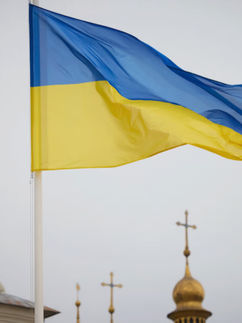Cooperation: The Key to Solving Migration Issues in the EU
- Young Diplomats Society

- Sep 12, 2016
- 3 min read
Updated: Oct 1, 2020

Triin Ott
Immigration to the European Union challenges the cooperation between the member states as well as with the third party countries. In addition, the collaboration with diverse international organisations has also been significant. Various agreements and projects have been arranged in bilateral and multilateral terms to find the resources that would finally help to change the crises in migration controllable. The policies that would help to decrease and minimise the migration flows to the EU could be diverse but it is debatable whether and which ones have the tools to construct a solution.
The International Organisation for Migration (IOM) states that in 2016, starting from January through August, 304,993 migrants have arrived in Europe. It is essential to highlight that the total arrivals include 290,596 by sea and 14,397 by land. Italy, Greece and Bulgaria have been the most popular points of entry to the EU. The main nationalities of arrivals are typically Afghanistan, Eritrea, Gambia, Iraq, Ivory Coast, Nigeria, Pakistan, Sudan or Syria. The IOM turns attention to the fact that 3,198 persons have already died or are missing as a result of trying to cross the Mediterranean thus far (September 2016).
It is important to address the policies that would help stabilise living conditions in the countries where the migration flows have started. At the same time, it is necessary to highlight the approaches that are essential to guarantee the systematic management of the persons who have already arrived to the EU. It is equally important to form comprehensive migration regulations. However, it is significant to understand the shortages during the implementation of the regulations and reform them as quickly and effectively as possible. For example, to guarantee a sustainable approach in managing migration, it is necessary to balance the responsibilities among the EU membership countries in the case of asylum seeking. According to this, the reforms of Dublin Regulation (the EU law that regulates the responsibility among the EU member states to examine an application for asylum seekers) would be big step forward as this will help share the understanding that particular countries are not solely responsible in this crisis but there is a joint and universal responsibility to deal with migration problems. In addition, the EU asylum fingerprint database, the European Automated Fingerprint Identification System (EURODAC), has prompted questions concerning the extent of the retention and sharing of data of migrants. Furthermore, EU officials have argued that while the database has been very useful approach, constructive solutions are welcome.
The Global Approach to Migration and Mobility frames the external migration and asylum policy of the EU. It outlines its main priorities and defines the framework of cooperation with regards to migration issues. The Silk Routes Partnership projects and the EU-Horn of Africa Migration Route Initiative are just two of the many examples where the EU has tried to establish a constructive dialogue between two or more countries. During the EU’s naval mission, Operation Sophia, a large number of people have been rescued while they tried to move from Libya to Italy. Moreover, some countries have recently exhibited improving trends in collaboration. For example, Serbia and Croatia held a joint operation organising the management of the trains that transports migrants from border of Serbia to the registration centre in Croatia. The EU and Turkey have strengthened joint operations in the field of migration. Certainly, it has helped slow down the irregular migration flow through Turkey to the EU. As the deal in migration between the EU and Turkey has been successful and the migration to Greece has decreased, thus the attention should be turned to Italy. Italy is now seen by some as the ‘new Greece’ because of its increasing number of migrants wishing to use Italy as their first point of entry to the EU. This change in the migration flow demonstrates that cooperation needs to continue while taking into account present developments to secure sustainability in reducing irregular migration.
In addition to current projects to guarantee the constructive steps concerning the migration policies today and in the future, one of the possibilities would be the encouragement of ongoing discussions. The discussions between the various participants could encourage innovative policy ideas and solutions. One of such examples is the Mediterranean Transit-Migration Dialogue. As an informal consultative platform, it gives the opportunity for officials from involved to discuss the migration issues while exchanging ideas and exploring diverse approaches. Today, collaborations and discussions exist concerning the migration between EU and third party countries and relevant organisations. However, to secure the capability to keep the migration crisis under better control, even stronger and more extensive ties in cooperation between the several parties are needed.

















Comments